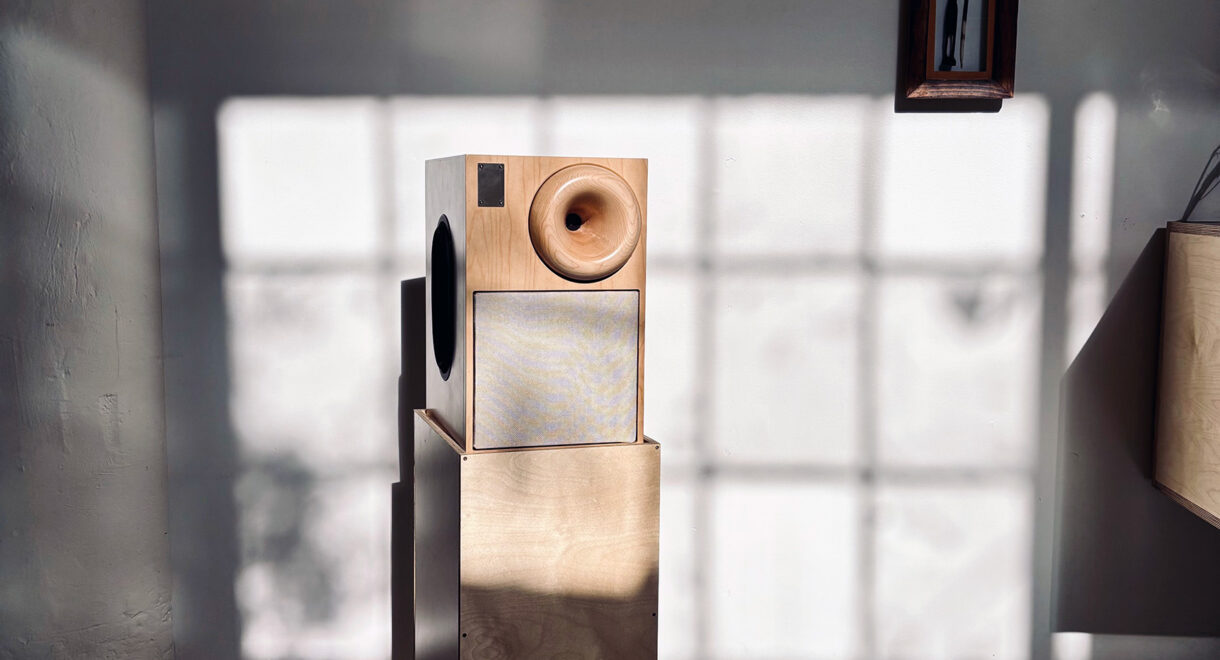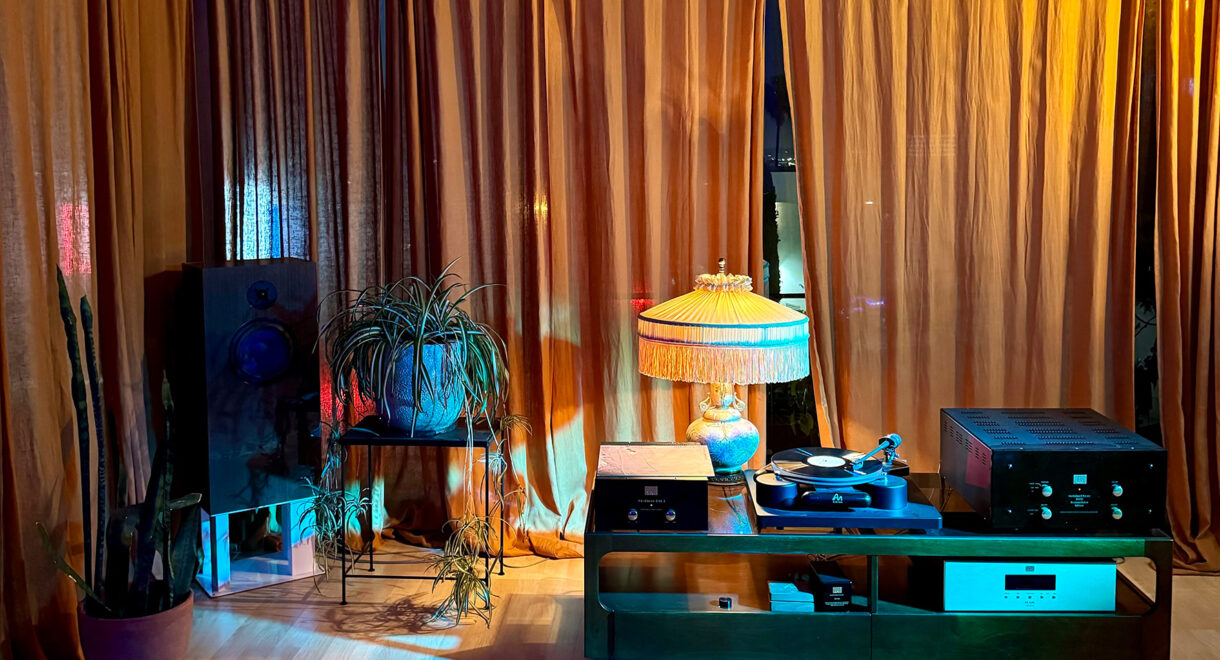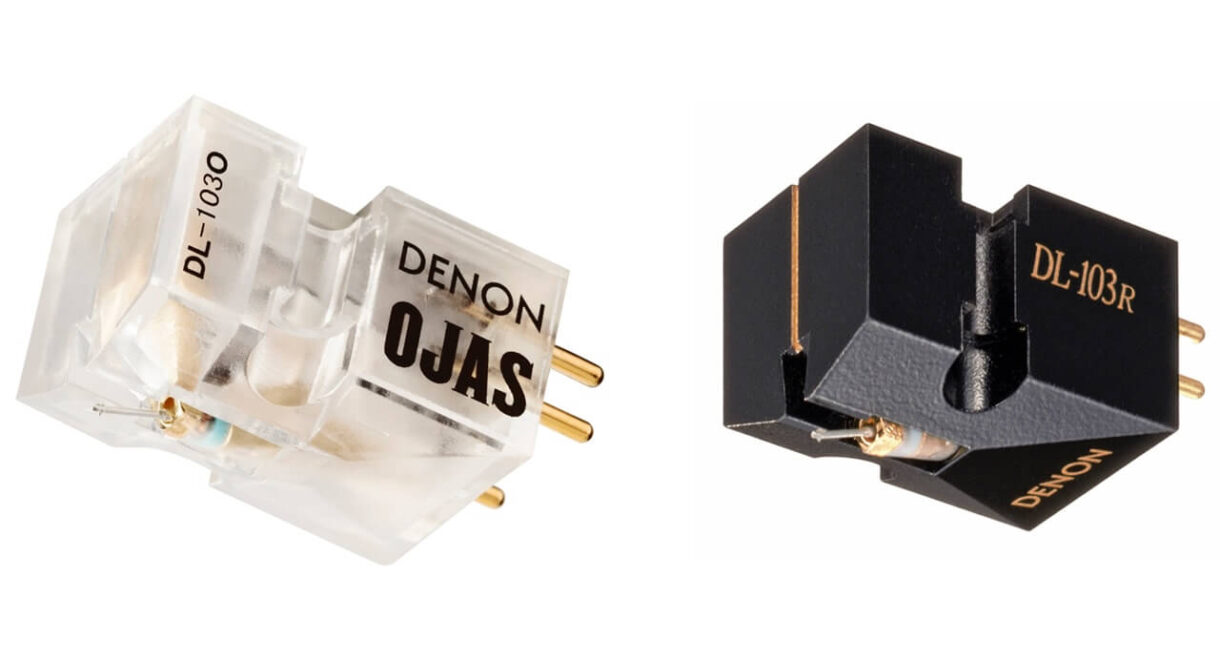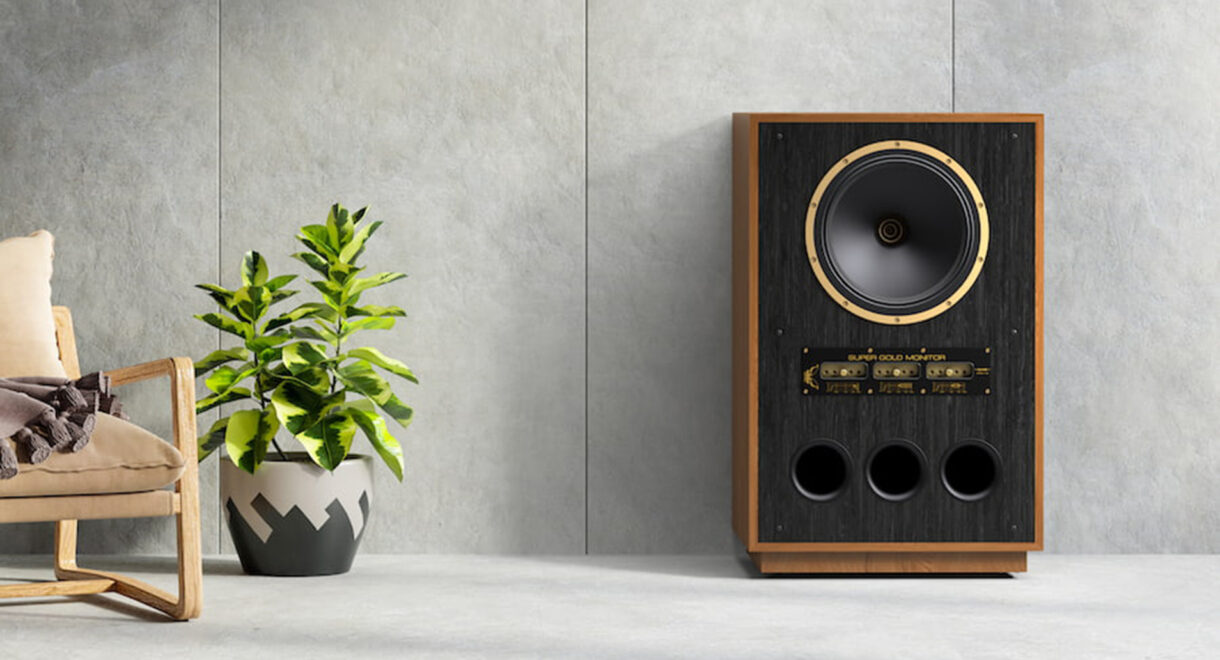Transparent clarity, deep bass, and “Invisible Sound” from German audio company ADS. Background: One of the lesser known hi-fi brands of the ’70s, ADS (Analog and Digital Systems) […]
Best Audiophile Turntables Under $2,000 in 2024

Looking for your first high-end audiophile turntable but don’t want to spend more than $2,000 for something that will be your deck for many years to come?
Are you considering a turntable upgrade in 2024? Before you empty your wallet on a deck that might seem like the right path for you — we have a few suggestions that might make more sense long-term if your budget is between $600 and $2,000.
There are so many turntable options available right that it has become rather confusing for both experienced audiophiles and music listeners who have only recently jumped aboard the vinyl train.
Choice is great. But that doesn’t mean that dropping $5,000 on your first turntable makes any sense.

Most of your investment needs to be in the music. Don’t be one of those people with a super expensive deck and 30 audiophile pressings.
Should you spend more on the turntable or cartridge?
Investing more in a better table will pay off long-term and you can always upgrade your cartridge at a later date. We have some excellent suggestions below $500 that are proven performers.
Should you always go with a new deck or can a restored vintage turntable also deliver excellent sonic results?

I have used three restored Thorens turntables from Vinyl Nirvana over the past decade and whilst the return on investment has been excellent — none of these options were inexpensive when you factored in the custom hardwood plinths, tonearms, and associated cartridges.
The minimum investment in one of these turntables is around $1,800 USD.
The build quality on all of these turntables that were originally made in the 1970s is excellent and there have been zero issues with reliability or parts — Dave Archambault has enough to last many years of service.
But for most people — a new turntable probably makes the most sense.
Audiophile Entry-Level (Below $600)

Andover Audio SpinDeck Max Automatic Turntable ($599)
There is a lot of competition below $600 and I was fortunate last year to try a number from Rega, Pro-Ject, Fluance, and Andover Audio. The level of performance that can be squeezed out of an entry-level deck is surprising, but for most people — they just want to set it up and listen.
I wasn’t really blown away by the SpinDeck but the SpinDeck Max is a completely different table that is manufactured in Germany for Andover. The automatic design just feels more substantial and it’s built to a much higher standard; which includes the tonearm and rather beefy platter.
The supplied Ortofon OM10 is fine but I swapped it out for a Grado Prestige Red3 which just sounds fuller and less bright in my office system. The SpinDeck Max is not a fancy deck but it comes across as slightly more authoritative sounding with excellent pace in most systems. It can also be tweaked with a cork platter from Analog Restorations and certainly benefits from some isolation. You might be surprised at what this deck can do with a better cartridge and phono preamplifier.
Where to buy: $599 $399 at andoveraudio.com | Amazon
Audiophile Mid-Tier

Pro-Ject Debut PRO ($999)
Having spent three months with the Debut Pro which proved to be one of my favorite products of 2022, I’m more than confident to recommend it to anyone in the $1,000 range. Inflation has pushed everything higher but I’d still spend the extra money on this one.
Having compared the Debut Pro to all 6 tables that I have at home which includes the aforementioned Thorens decks, a NAD C 588, Yamaha YP-701, and a mystery deck that is currently under review — the Debut Pro is an excellent deck that can be tweaked to a very high level of performance. Consider this to be the best currently available under $1,000.
Pro-Ject has the ability to manufacture almost anything and the new tonearm and very inert platter elevate this table in a very substantial way; it sounds far more forceful and dynamic compared to the Debut EVO tables that lack some bottom end weight and presence in comparison.
The supplied Sumiko cartridge works well but swapping that out for the Sumiko Wellfleet or Blue Point No. 3 is a very worthwhile upgrade.
Read my Pro-Ject Debut Pro review here or watch our video review here.
Where to buy: $999 at Amazon | Crutchfield | Turntable Lab

U-Turn Audio Orbit Theory ($999)
The little engine that could is tucked away in a suburb outside of Boston, and after almost 10 years old it is hard not to be impressed by what Ben Carter and the folks at U-Turn Audio have accomplished.
The new U-Turn Audio Orbit Theory Turntable is a huge milestone for the company that has focused on the market below $400 for most of their existence.
When I visited the company almost 7 years ago, it was impossible not to notice that they were struggling with the sheer volume of orders and that they needed to find better domestic sources for their platters, plinths, and motors.
Carter and I discussed the rationale for the price structure of their tables and the possibility of manufacturing something in the $700 USD range.
There was already the desire to make something like the Orbit Theory and take on Rega and Pro-Ject, but that required more capital, employees, and the ability to create a tonearm that would be a major upgrade over the tonearm on the existing Orbit.

The new U-Turn Audio Orbit Theory is $999 USD — you can also order a version with their internal phono stage for $1,069.
The focus with the new Orbit Theory is clearly on the tonearm, motor, and construction of the plinth.
For the Theory Orbit turntable, U-Turn decided that they needed to take their OA2 gimbal bearing design to the next level by further reducing points of resonance in the tonearm. Practically speaking, this meant using more rigid materials and minimizing the number of connection points between parts.
The new motor and pulley are so quiet that they can be mounted directly to the plinth, ensuring perfect belt alignment. The motor is electronically controlled by a DC-powered sine wave generator – this provides very stable platter speed and gives you the ability to change between 33/45 RPM with the turn of a knob.
Theory’s acrylic platter is frosted, and all of platter surfaces have been precision machined for maximal flatness and minimal runout. They have also machined a groove into the platter to keep the belt in place.
What better way to celebrate a new turntable than with a new finish? For Theory, U-Turn decided to do real hardwood plinths, but wanted to spice things up a bit. Ebonization is a traditional finishing process that turns wood black without staining or painting.
How does it sound?
Bold. Precise. Far more substantial than any of the decks they have produced before and with excellent tonal weight and speed.
Where to buy: $999 at uturnaudio.com
Audiophile High-End ($1,200+)

Technics SL-1500C Direct Drive ($1,299)
Technics has been very aggressive during the vinyl revolution introducing a number of new models that have sold out in some markets within weeks. The brand has a proven track record with both DJs and audiophiles and even its top models that sell for more than $3,000 USD have continued to sell well.
The SL-1500C sits in the middle of the Technics product lineup and has been available since 2019. However, looks like it isn’t going away anytime soon as Technics, instead of offering to replace it has decided to offer a new color option in addition to the standard silver and black, the SL-1500C will also be available in matte white (SL-1500C-W).
With its minimalistic look, the SL-1500C-W is designed for great performance and ease of use supported by the following key features.
The SL-1500C-W incorporates a coreless direct drive brushless DC motor. This allows for a stable rotation that is free from “cogging.”
The two-layer platter provides improved vibration-damping performance.
The highly sensitive S-shaped aluminum tonearm accurately reads record grooves; an S-Shaped tonearm has an equal mass on both sides of its pivot point.
In addition to its S-shape the tone features Auto-lift. This minimizes needle wear-out and preserves records.
The SL-1500C-W has a high-rigidity cabinet and a high-damping insulator for the thorough shut-out of vibrations. This ensures smooth tracking.
What makes this deck unique?
Fantastic speed stability, combined with rather rugged construction and a solid tonearm make it a reliable platform for a wide range of cartridges. We’ve listened to this range of decks with Ortofon, Hana, Grado, and Golding cartridges and you might be surprised how well it performs with $750 to $2,000 cartridges. It also elevates the performance of less expensive cartridges making it a great platform that you can upgrade over time.
Where to buy: $1,299 at Crutchfield in black (SL-1500C-K), silver (SL-1500C-S), or white (SL-1500C-W)

Rega Planar 3 50th Anniversary ($1,695)
Rega’s iconic turntables have been in production for 50 years and would make any credible list of high-end audio components that have changed the industry. Rega has also sold hundreds of thousands of tonearms over the past 5 decades; audiophiles have purchased OEM versions of its tonearms from a number of brands including Michell, Origin Live, Moth Audio, and Goldring.
In 1977, Rega introduced the Planar 2 and Planar 3 turntables, which were an evolution of the Planet turntable. The Planar 3 was designed to be a higher-end version of the Planar 2, with better build quality and performance.
The Planar 3 had a glass platter, a low-noise motor, and a new tonearm. The new Rega-Acos R200 tonearm was a radical departure from the standard tonearms of the time.
It was a lightweight design that used a unipivot bearing, which allowed it to track the record groove more accurately. The Planar 3 was an instant success and quickly gained a reputation for its excellent sound quality and value for money.
Over the years, Rega has continued to refine and improve the Planar 3 turntable. In 1983, they introduced the RB300 tonearm, which was a significant upgrade over the original tonearm. The RB300 used a more rigid tube and a more advanced bearing system, which improved tracking accuracy and reduced distortion.
In 1991, Rega introduced the P3 turntable, which was an updated version of the Planar 3 with a new motor, platter, and tonearm. In 2000, Rega introduced the P3-24, which had a new 24-volt motor and a new plinth design.
In 2016, Rega introduced a new version of the Planar 3, which had a new RB330 tonearm, a new plinth design, and improved motor control circuitry.

Available in the hugely popular new walnut effect finish, the 50th anniversary Planar 3 is supplied with a hand tuned Neo PSU MK2 and the handmade Rega Exact moving magnet cartridge factory fitted.
For those looking to upgrade this Planar 3, there is a new cartridge option just released by Rega at High End Munich 2024 that looks like a big upgrade over the Exact.
According to Rega, the Nd3 will offer between 5 and 6mV of output (which feels somewhat ambiguous) and requires 1.75 grams of tracking force. The headshell uses 3 points for attachment making it ideal for Rega’s own tonearms.
Each Nd3 is hand-made by Rega’s skilled technicians in the UK factory. The design uses brand new generator geometry with perfect symmetry to achieve highly accurate channel balance. The Nd3 also has an optimized pole gap for superior linearity and cross talk characteristics.
The complete assembly is housed in a zero tolerance Injection moulded glass filled polyphenylene sulphide body (PPS) which is a lightweight and highly rigid material. A low mass body reduces stress on the tonearm bearings and aids free movement which is critical in accurate vinyl replay.
This new body design was inspired by Rega’s existing range of MC cartridges.
The drive system uses their reference drive belt and a custom CNC’d aluminium drive pulley to deliver the absolute best in performance and accuracy.
The Anniversary Edition is completed with an aluminium lid plinth badge and smoked dustcover to complete the Anniversary Edition.
What makes this deck special?
If you put enormous value on tempo, clarity, detail, and a very open sounding presentation — the Rega is very hard to beat.
The expressive nature of this deck is second-to-none at the price.
Where to buy: $1,695 at Music Direct (limited availability)
Tip: The regular Planar 3 (without cartridge) starts at $1,125 at Turntable Lab and Audio Advice

Pro-Ject X2 B ($1,799)
Does balanced really make a difference?
My experience suggests that it does if you have to contend with certain noise issues.
Almost 22 years ago, I invested in a very expensive turntable and felt that I had reached vinyl nirvana. I paid a professional $200 to properly install the cartridge, setup the table which had a finicky suspension system, and help me mount the turntable shelf to the wall.
My building at the time was a pre-war in downtown Toronto that needed an upgrade on the electrical front. Noisy to say the least.
No matter what I tried, my turntable setup always sounded noisy; ground loop issues, constant hiss, and it became a a source of depression (first world problems). Why bother spending almost $8,000 on such a system if it sounded terrible.
A local dealer suggested that I have my arm and table modified so that I could run a fully balanced rig; which also included upgrading to a balanced phono stage. I sold a few other items to facilitate the changes.
Extreme? Perhaps.
But when I listened to the same records that mattered to me — I was stunned by the differences in clarity, noise floor, and overall dynamics of the sound.
Does a balanced setup always sound better? Not necessarily and I’m not convinced that every manufacturer who markets “balanced” is really offering that.

The Pro-Ject X2 B offers both single-ended and balanced connection options, but you do need to use an MC cartridge for a balanced setup.
Is there a huge gap between the Debut PRO and the X2 B? Fair question.
If running the same MM cartridge like a Sumiko Wellfleet, I would still give the edge to the X2 B when it comes to impact and overall resolution, but the gap isn’t enormous.
However, when running a MC cartridge into one of the Pro-Ject balanced phono pre-amplifiers or something like the Moon by Simaudio 610LP — the gap between the two tables is rather enormous.
The clarity, bass impact, soundstage depth and width, and overall dynamics of the system totally changes.
The Pro-Ject X2 B goes from being a very good $1,799 turntable to a rather exceptional table that can compete with some tables in the $2,500 to $3,000 range and I’ve heard enough $3,000 tables to know. Read my in-depth review here.
Where to buy: $1,599 at Crutchfield | Turntable Lab
This article originally appeared at ecoustics.com and has been published here with permission.










